A lanyard is a practical accessory that is designed to store cold weapons. This item must be fixed to the handle. As a result, the product not only will be as a decoration, but it will also not allow you to lose the instrument.
There are many weaving patterns for keys, flashlights or knives, which makes it possible to make the product with your own hands. It is recommended to choose paracord for weaving.
What is a lanyard?
In the 14th-16th centuries, a lanyard was made to avoid losing a weapon. After some time, the item became an obligatory component of military equipment. Leather with silk and wool yarns were used as a material. A saber that was released from the hands never fell, but continued to hang thanks to the created device.

A lanyard acts as a strap that secures a camping, hunting knife or other tool. For these purposes, the material used is artificial rope. The device is mainly used by fishermen, hunters, butchers, as well as athletes and tourists.
Paracord is a reliable, popular and lightweight material for making the product. Only with significant force can the cord be torn, in other cases it will not be possible to do so.
The material is often used to make parachute lines because it is not affected by moisture and can withstand a load of up to 240 kg. If necessary, paracord can be used to hang a boiler, stop bleeding, and for other purposes.
Only high-quality and genuine material has these properties, which is difficult to find because there are many fakes. The difference lies in the weaving structure.
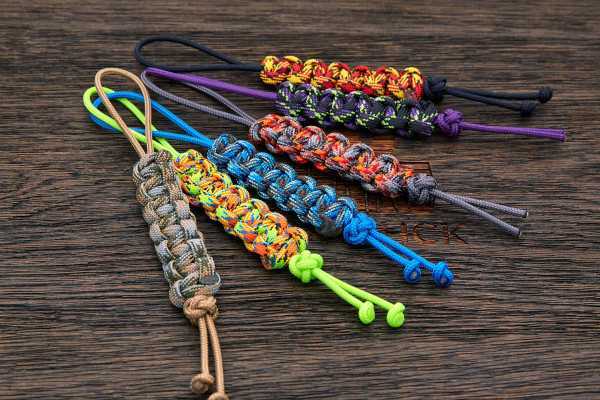
The central part must contain a core wrapped in 9 pieces of thread material. If there is no core, the material is not genuine. The fake will break if a load of up to 240 kg is applied to it.
To make a beautiful decorative ornament, it is not necessary to use real paracord. For these purposes, you can use a fake. At the same time, there are many different methods and patterns for weaving the device. If you have no experience, it is advisable to initially practice on simple methods.
When creating an accessory, the loop should be adjustable so that a carabiner can be attached to it. This helps to quickly fix the jewelry on the wrist.
Additionally, the manufactured product performs several functions:
- during swinging movements it helps to increase the amplitude;
- during chopping blows it can take some of the load on itself;
- acts as an accessory to the blade;
- allows you to quickly free your hand without having to drop the tool;
- if the tool accidentally falls out of your hands, the device will not allow it to get lost;
- thanks to the bright coloring it allows you to quickly find a lost item;
- can be used to store various tools;
- without stopping the fight, it gives the opportunity to change the grip;
- Prevents the risk of injury during stabbing strikes.

The final appearance of the device will depend on the weaving method.
Often preference is given to schemes in the form of:
- snakes;
- square;
- cobras;
- hunting knot;
- rhombus;
- ball.
Lanyard as an accessory
A paracord lanyard (the weaving patterns are clear, so they are suitable for beginners) today mainly serves as a decorative accessory for cold weapons, giving the blade an aesthetically pleasing look with style. At the same time, the device is rarely used for traditional purposes. However, in the past, this decoration performed many different functions.
For military personnel, this device was part of their uniform. It was used as an additional element to the award weapon. In this case, the material for making the accessory was the order ribbon, which has not lost its relevance to this day. However, the decoration is also made of leather.

This item is especially popular among Caucasian men, who are sure that the blade should have a bright continuation. When performing a dance with sabres, this type of product will add spectacle to the performance. At the same time, the item allows dancers to do a variety of tricks.
In everyday life, the device is an accessory used to decorate the knife handle. The decorative item can be purchased in a store or made by yourself.
Materials
To make a quality product, it is advisable to choose paracord. This type of material is considered a reliable and convenient option for creating a strong weave. However, you can also use other materials in the form of a tourniquet, rope, leather strip or any strong rope.
When choosing leather, you need to be prepared for the fact that the device will have a short service life. In extreme conditions, the material can be an elastic band from clothing, fabric material or braid. Birch bark, bast or willow are also suitable for creating jewelry.
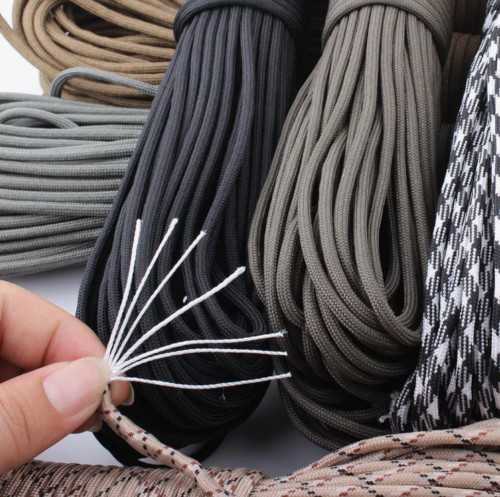
To make the item wear-resistant and durable, it is advisable to weave it from paracord. The cord is characterized by its synthetic origin, so it will not break or crack.
The material should have a bright shade so that it can be immediately noticed in the grass or leaves. Thanks to this, it will not be possible to lose the dropped tool. Sometimes the weaving is done from ordinary shoe laces. In this case, you need to correctly determine the length of the lace, because this affects the final result.
In order not to confuse paracord with ordinary rope, you need to look at the weave structure. The central core should be surrounded by 9 threads. If it is not necessary for the device to be practical, it is permissible to use a cheap fake.
In other cases, to check the authenticity of the material, it is necessary:
- feel the surface, which should be soft;
- set fire to the cord (there should be a smell of plastic and black smoke, while the braided material, unlike the core, should burn more quickly).
Weaving tools
A paracord lanyard (weaving patterns require the preparation of a small set of tools) is mainly woven to store a knife. The activity is fascinating and simple, and does not require serious expenses or special skills.

To work, you need to prepare several tools:
- a rope or cord, the length of which reaches approximately 100 cm (it is advisable to choose a synthetic or leather cord of a bright color, which should not be flat, but round);
- lighter for melting the edges of the material;
- a tool for making a hole in a knife if it does not have a special loop.
Some stores offer a ready-made set of tools that are designed to work with paracord. If desired, you can purchase it so as not to look for tools separately.
After preparing all the tools with the material, you can start choosing the weaving option. Beginners often choose to knit simple and straight knots alternately. When combining these knots, you can create a rhombus, a snake, a square, a ball or a cobra.
Mounting methods
The weaving patterns allow you to fix a paracord lanyard in a special hole using several methods:
- spare key ring;
- carbine;
- small size transition ring;
- Fishing guide ring.

Any device can be used for fastening. The main thing is to make a strong connection. In this case, several unmasking manipulations are required so that the sound from the contact of one metal with another is not heard.
Often, the fastening is done using a special hole. There are several different techniques. In this case, you can make a knot, a clamp, form a loop, or use a special paper clip.
Each method has many positive qualities. When choosing a method of fastening, you need to consider your own preferences. Additionally, you need to take into account safety and comfort when using cold weapons.
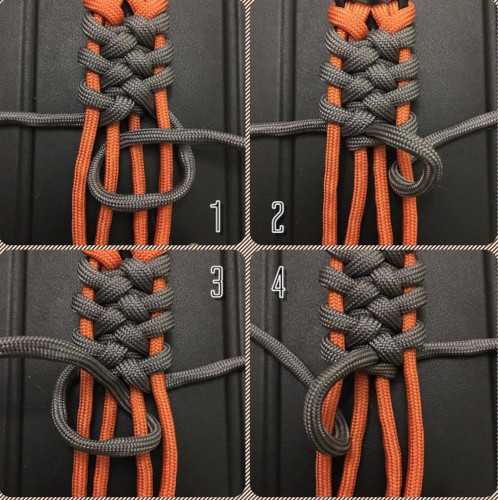
Many tools are equipped with a handle with a hole for a lanyard, which makes work much easier. The looped lanyard is not a very secure method of attachment, but is suitable for carrying small folding knives.
If you decide to attach the decoration with a knot, it is advisable to choose a thin strip of leather or a single-layer paracord. In this case, the material will need to be passed through the hole to create the knot.
Weaving options
A paracord lanyard (weaving patterns can be in the form of a snake, a hunter's knot, a ball) can be presented in several versions. In this case, both patterns and knots that are required to fix the decoration to the handle are suitable for work. If necessary, the device can be decorated with beads or other small elements.
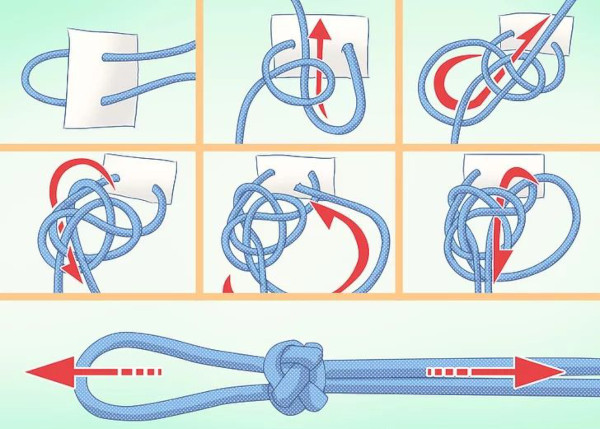
There are 2 types of weaving:
| View | Peculiarities |
| With a loop | Due to this element, the functionality of the device acquires more possibilities. If there is a loop, the product can be put on the hand. Additionally, the load will be partially removed from the hand, which is considered practical and comfortable. |
| With cord | This method has little functionality. The emphasis is on the decorative element. However, thanks to this option, it is possible to extract the tool from the pocket more quickly. |
The appearance of the device will depend on the features of the knife. For example, a miniature accessory can be made for a small folding tool.
If the knife is solid and large, the device should be large. For an axe or machete, the accessory weave should consist of wide loops. Such tools cannot be hung on the finger, but they can be hung on the wrist.
DIY Instructions for Making a Knife
A paracord lanyard (weaving patterns can be both simple and complex) can be made in the form of a snake, which is considered a popular technique for creating decorative jewelry. For weaving, it is permissible to use one or two cords. In the latter case, the device will have a more beautiful appearance.
Additionally, you need to prepare a medical clamp for work.
When choosing two ropes, you first need to join them together. Then you need to melt their ends with a lighter. Then the edges need to be connected and pressed with a medical clamp.
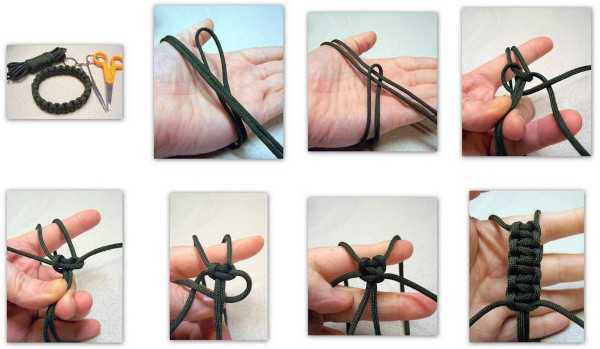
Step-by-step description of the technique:
- To make the first knot, throw the left end of the rope through the loop at the back over the right end of the cord.
- Take the right rope and pass it behind the left cord.
- Then pass the right cord over the left one into the loop left from the left rope. This loop is small and is located at the bottom.
- After each loop, turn the device over.
- Pull the right cord through the loop at the back.
- Using the clamp, grab the right lower knot and pass the right rope through it.
The lanyard can be made removable so that it can be used for various handy tools. This version of the product is suitable not only for a knife, but also for a flashlight and keys.
Necessary tools and materials:
- lighter;
- carabiner clasp;
- ruler with scissors;
- paracord 150 cm long;
- tweezers or tongs.
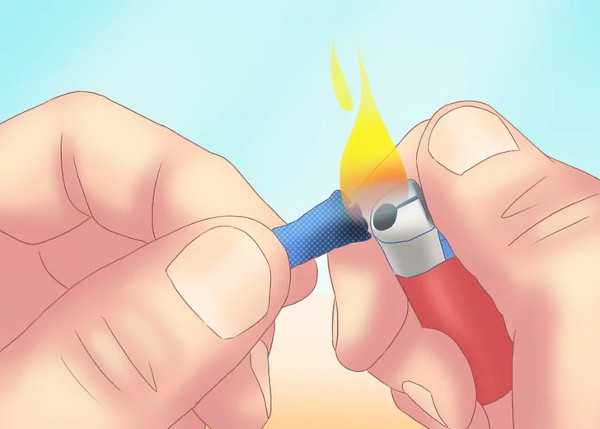
Step-by-step instructions for creation:
- Fold the rope into 2 parts and thread it through the carabiner. Then determine the length of the future accessory.
- Secure the clasp using 2 knots.
- Turn the product over to the other side.
- To continue working, take the pliers. Pass the tool through the formed loop so that the other end of the cord can be pulled through it. Tighten the knot tightly.
- Turn the device over again and pull the other end of the rope through the formed loop.
- Do the same with the other end of the cord.
- Continue weaving according to the given pattern until the required size of the accessory is reached.
- Shorten the excess edges of the product with scissors, then burn with a lighter. Carry out the last manipulations carefully so as not to burn your fingers.
With a bead
If desired, the device can be decorated with a bead if the lanyard is to be used as a holiday gift.
List of tools and materials:
- bead;
- scissors with a lighter;
- paracord 55-100 cm long (can be replaced with a nylon cord with a round cross-section).

Step-by-step description of the technique:
- Fold the material in half and mark the center. Step back a little from the bend. This is where the loop will be located, with the help of which the device can be attached to any object. Choose the size of the loop at your own discretion.
- Make 3 snake-shaped knots one after another. The number of knots can be any. Everything will depend on the desired size of the accessory.
- When 3 knots are created, thread the bead. To do this, pass 2 free edges of the material through the hole of the bead. Then pull the bead tightly to the corners.
- Make another 1 snake knot, pulling it tightly towards the bead.
- To create a Celtic knot, so that the weaving is more textured and large, make a loop at one end of the rope and pass the other free end of the cord through. The result should be a figure resembling a heart.
- This end of the cord is inserted into the edges of the figure one by one, moving between the turns. Similar manipulations are performed on the other side.
- Trace the figure around in a circle again, passing it through the loops.
- Hide the edge of the rope on the back of the knot.
- When forming the base of the Celtic knot, it should be gradually tightened on each side to prevent deformation of the shape. For a tighter tightening, tighten one strap after the other in turn.
- Once the main knot is joined to the other knots and is tightly pulled, trim off the hanging ends.
- Cut the ends almost to the root. There should be about 1 mm left. Carefully burn the remaining edges with a lighter.
- Heat the rope carefully so that the entire knot does not melt. When the cut area begins to melt, press this area with scissors.
- Straighten the accessory to obtain even knots and place the bead in the desired place.
The weaving patterns for a lanyard are not very complicated, so anyone can make a decorative item for safe storage of a knife. In this case, you only need to decide on the method of attachment and weaving option. To ensure that the product is reliable and of high quality, it is better to use paracord as a material.
Video on making a lanyard from paracord
Simple paracord knife lanyard with snake weave:
